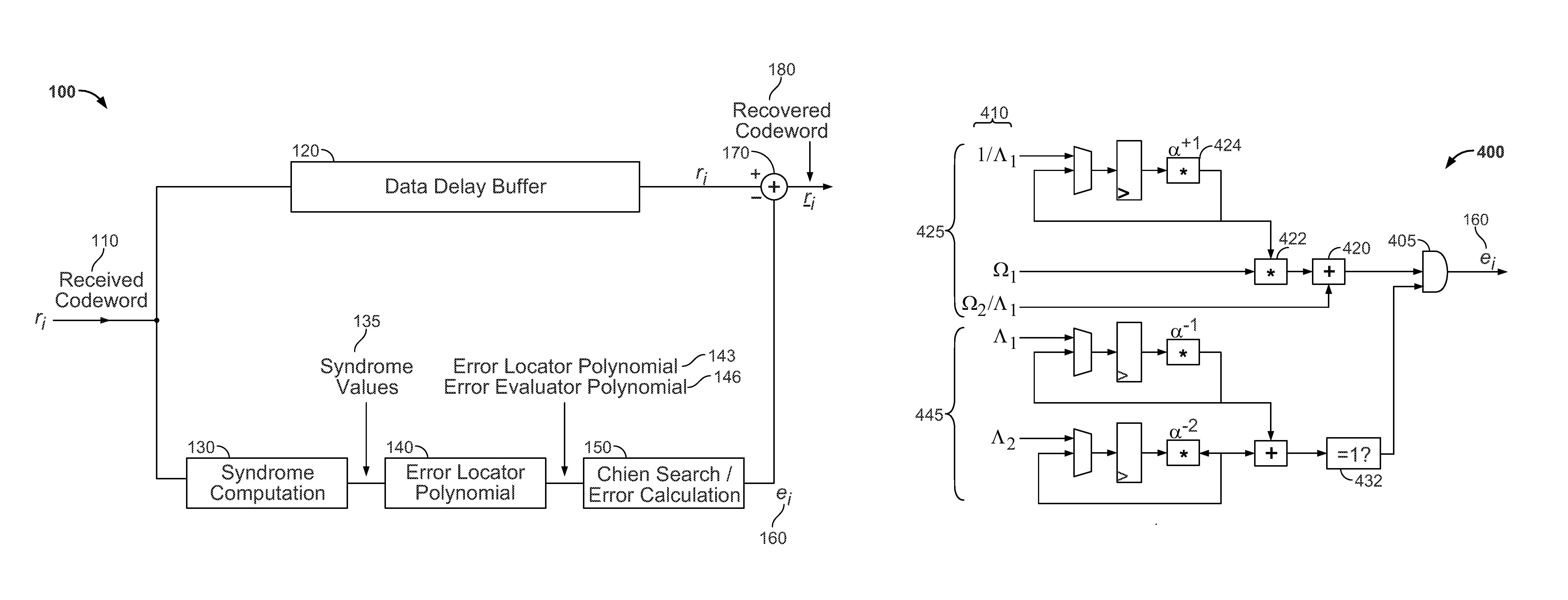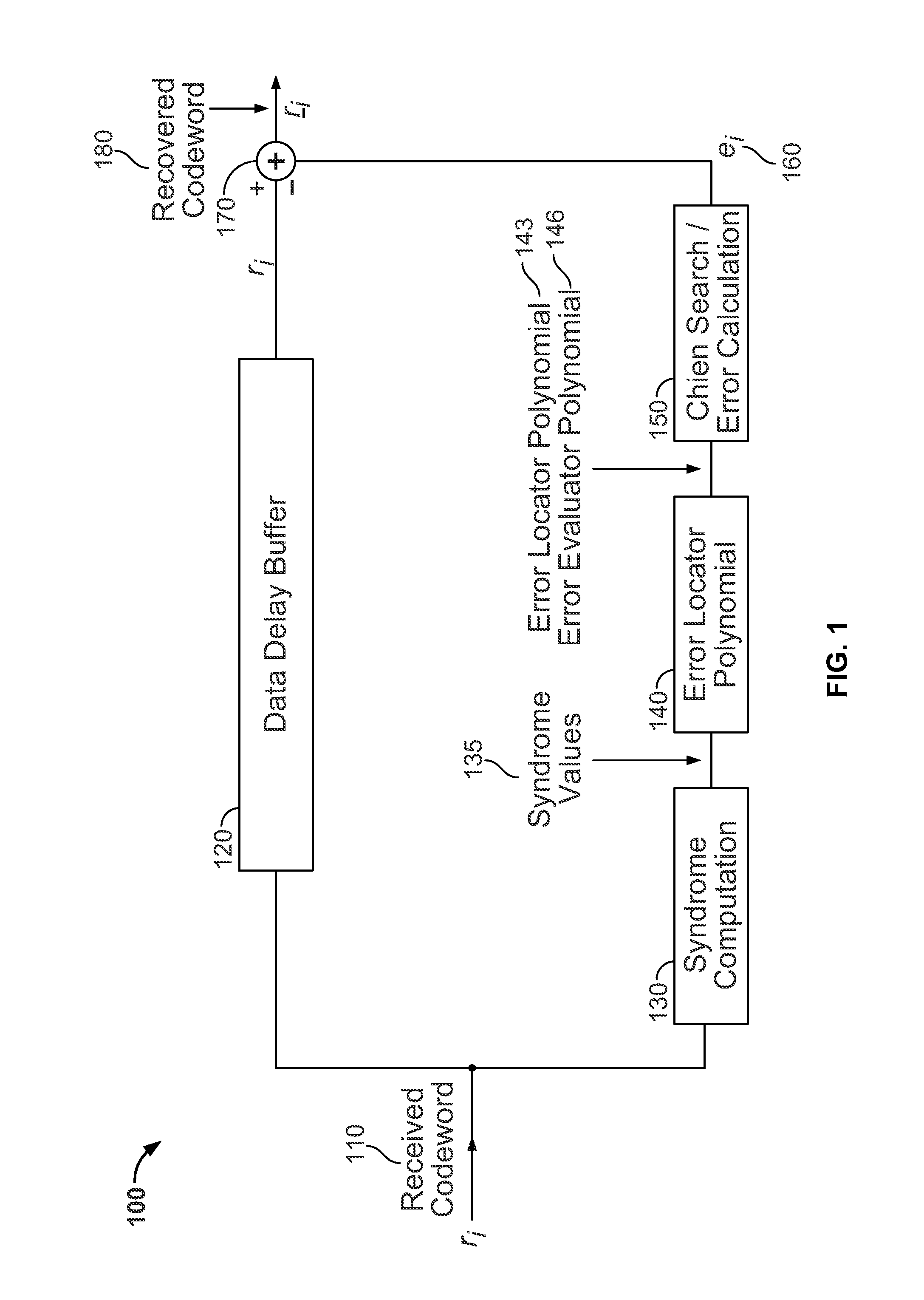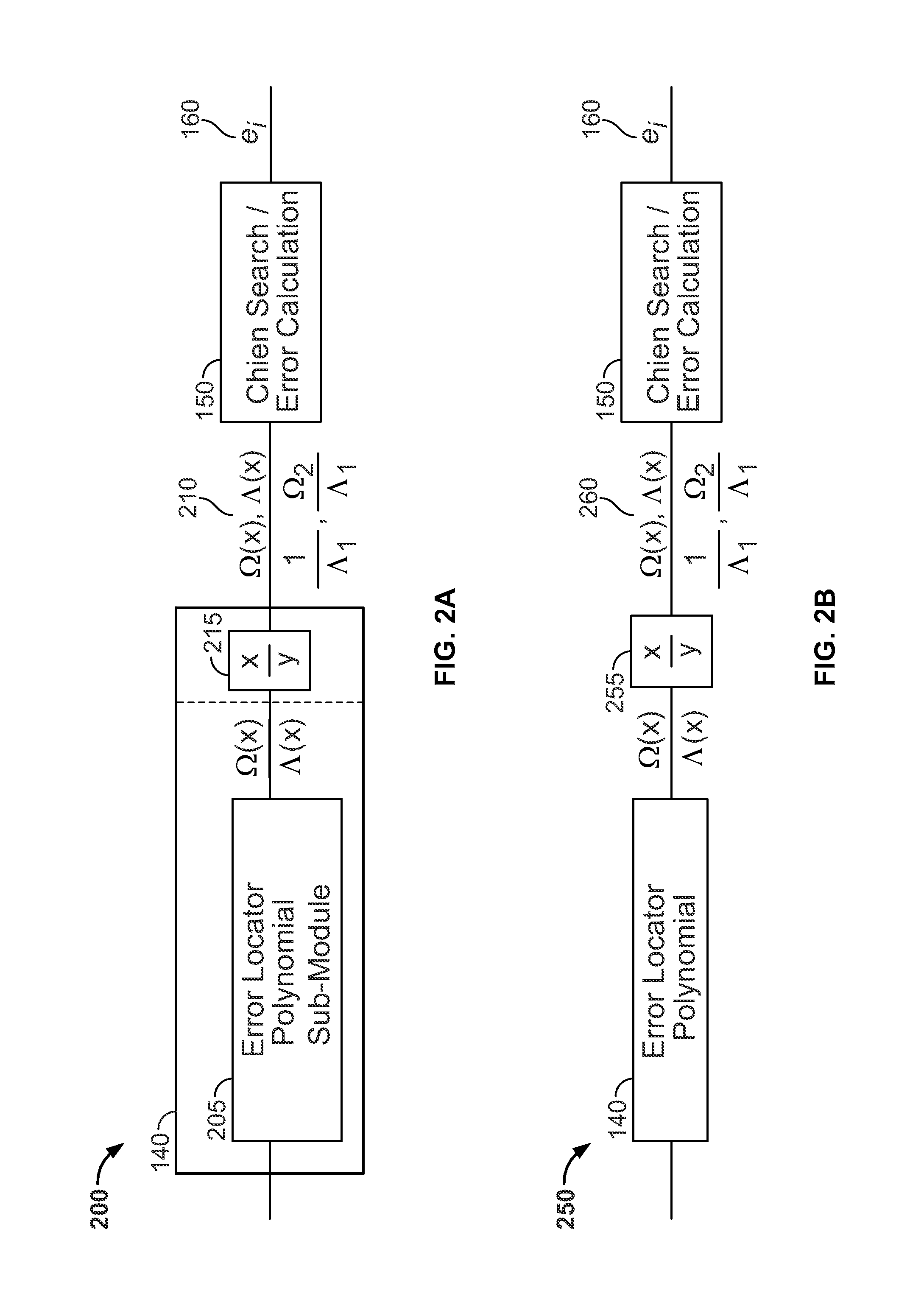Parallel low and asymmetric rate Reed Solomon coding
a reed solomon and low rate technology, applied in the field of parallel low and asymmetric rate reed solomon coding, can solve the problems of high cost, large size, monetary cost, power consumption, and the introduction of data errors at a much lower frequency
- Summary
- Abstract
- Description
- Claims
- Application Information
AI Technical Summary
Benefits of technology
Problems solved by technology
Method used
Image
Examples
Embodiment Construction
[0024]Disclosed herein are methods, systems, and apparatus for implementing Reed-Solomon decoders, and other types of decoders, in a network environment. The disclosed methods, systems, and apparatus advantageously reduce a number of ALUTs required for a decoder implementation in a pipelined architecture. As described herein, such advantages are achieved in various arrangements by using an asymmetric decoder (i.e., a decoder that is functional to correct less than a maximum number of correctable codewords in a Reed-Solomon codeword) and / or by reducing or eliminating a number of finite-field dividers required per pipeline stage in a decoder implementation.
[0025]FIG. 1 illustrates a pipelined Reed-Solomon decoding architecture in accordance with an arrangement of the present invention. A decoder 100 is used to sequentially process received codewords to recover corresponding datawords. The decoder 100 receives the codewords through receiver circuitry (not illustrated in FIG. 1) over a ...
PUM
 Login to View More
Login to View More Abstract
Description
Claims
Application Information
 Login to View More
Login to View More - R&D
- Intellectual Property
- Life Sciences
- Materials
- Tech Scout
- Unparalleled Data Quality
- Higher Quality Content
- 60% Fewer Hallucinations
Browse by: Latest US Patents, China's latest patents, Technical Efficacy Thesaurus, Application Domain, Technology Topic, Popular Technical Reports.
© 2025 PatSnap. All rights reserved.Legal|Privacy policy|Modern Slavery Act Transparency Statement|Sitemap|About US| Contact US: help@patsnap.com



